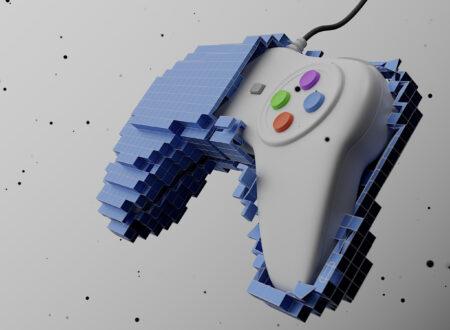Video games have come a long way since the pixelated screens and chiptune sounds of the early 1980s. What once was considered a niche hobby for kids has exploded into a billion-dollar industry that spans across ages, cultures, and continents. From simple 8-bit classics to immersive virtual reality (VR) worlds, the evolution of gaming tells a story of innovation, creativity, and technological advancement.
Let’s dive into how gaming transformed over the decades — and where it’s headed next.
1. The 8-Bit Era: Where It All Began
The roots of modern gaming can be traced back to the 8-bit era of the late 1970s and early 1980s. This was the time when home consoles like the Atari 2600 and Nintendo Entertainment System (NES) made video games accessible to the masses. These systems introduced gamers to iconic titles like:
- Pac-Man
- Super Mario Bros.
- The Legend of Zelda
- Donkey Kong
With simple controls and basic graphics, these games relied heavily on creativity and gameplay mechanics to keep players engaged. The charm of these early games still holds strong today, as retro gaming continues to thrive through emulators and classic re-releases.
This era laid the foundation for what would become a constantly evolving and increasingly immersive form of entertainment.
2. The Rise of 3D and Console Wars of the ’90s
The 1990s marked a massive leap in technology and competition. Gaming shifted from 2D to 3D graphics, thanks to systems like the Sony PlayStation, Nintendo 64, and Sega Saturn. Players were no longer limited to side-scrollers and top-down views — now they could explore fully rendered 3D worlds.
Key innovations of this era included:
- Analog controls for smoother movement
- Memory cards to save progress
- CD-based games with larger storage capacity and higher-quality audio
The ’90s also saw the birth of legendary franchises like Final Fantasy VII, Metal Gear Solid, GoldenEye 007, and Resident Evil, which raised the bar for storytelling and cinematic presentation in games.
It was also the era when the term “console wars” became popular — as fans fiercely debated the superiority of PlayStation vs. Nintendo vs. Sega.
3. Online Gaming and the Rise of Multiplayer Worlds
With the new millennium came the internet — and gaming changed forever. The introduction of online multiplayer capabilities turned gaming into a social experience. No longer limited to playing against AI or a friend sitting beside you, you could now team up or battle with players from around the world.
This shift gave rise to:
- MMORPGs like World of Warcraft
- Online shooters like Halo 2 and Call of Duty
- Massive online communities forming around games
PC gaming also surged during this time, with titles like Counter-Strike, The Sims, and StarCraft dominating the scene.
Consoles adapted as well — Xbox Live and PlayStation Network became standard, and downloadable content (DLC) and updates became part of the norm.
This era introduced the idea of gaming as a connected, evolving experience rather than a static product.
4. Mobile Gaming and the Casual Revolution
In the 2010s, the rise of smartphones gave birth to mobile gaming, bringing video games to the fingertips of billions. Suddenly, you didn’t need a console or PC to enjoy games — just a phone and a spare moment.
Games like:
- Angry Birds
- Candy Crush Saga
- Clash of Clans
- Pokémon GO
…turned casual gamers into daily players. These games emphasized quick sessions, addictive mechanics, and often used free-to-play models with in-app purchases.
While many hardcore gamers were skeptical at first, mobile gaming quickly became the largest segment of the gaming market — especially in emerging economies. It also introduced gaming to new audiences, including older adults and those who never considered themselves “gamers.”
5. The Future Is Here: Virtual Reality and Beyond
Today, we stand at the cutting edge of gaming innovation, with technologies like virtual reality (VR) and augmented reality (AR) pushing the boundaries of what’s possible.
Devices like the Meta Quest, PlayStation VR2, and Valve Index are allowing players to:
- Step into fully immersive 3D environments
- Interact with objects using hand tracking or motion controllers
- Experience physical sensations through haptic feedback
VR isn’t just a novelty anymore — games like Half-Life: Alyx, Beat Saber, and The Walking Dead: Saints & Sinners have shown the incredible potential of this platform.
Meanwhile, cloud gaming (like Xbox Cloud Gaming or NVIDIA GeForce NOW) is making high-quality games accessible without expensive hardware. And with AI-generated content, the future might include games that adapt to your playstyle in real-time.
Final Thoughts: From Pixels to Presence
The journey of gaming — from its humble 8-bit beginnings to fully immersive VR worlds — is nothing short of extraordinary. What started as simple entertainment has evolved into a dynamic art form that blends technology, storytelling, and interactivity in a way nothing else can.
As we look ahead, one thing is certain: gaming will continue to evolve, surprise, and inspire us.
Whether you’re a retro fan, a console warrior, a mobile gamer, or a VR pioneer — the world of gaming has something for everyone.
So, what’s next? Only time (and maybe a few teraflops) will tell.




